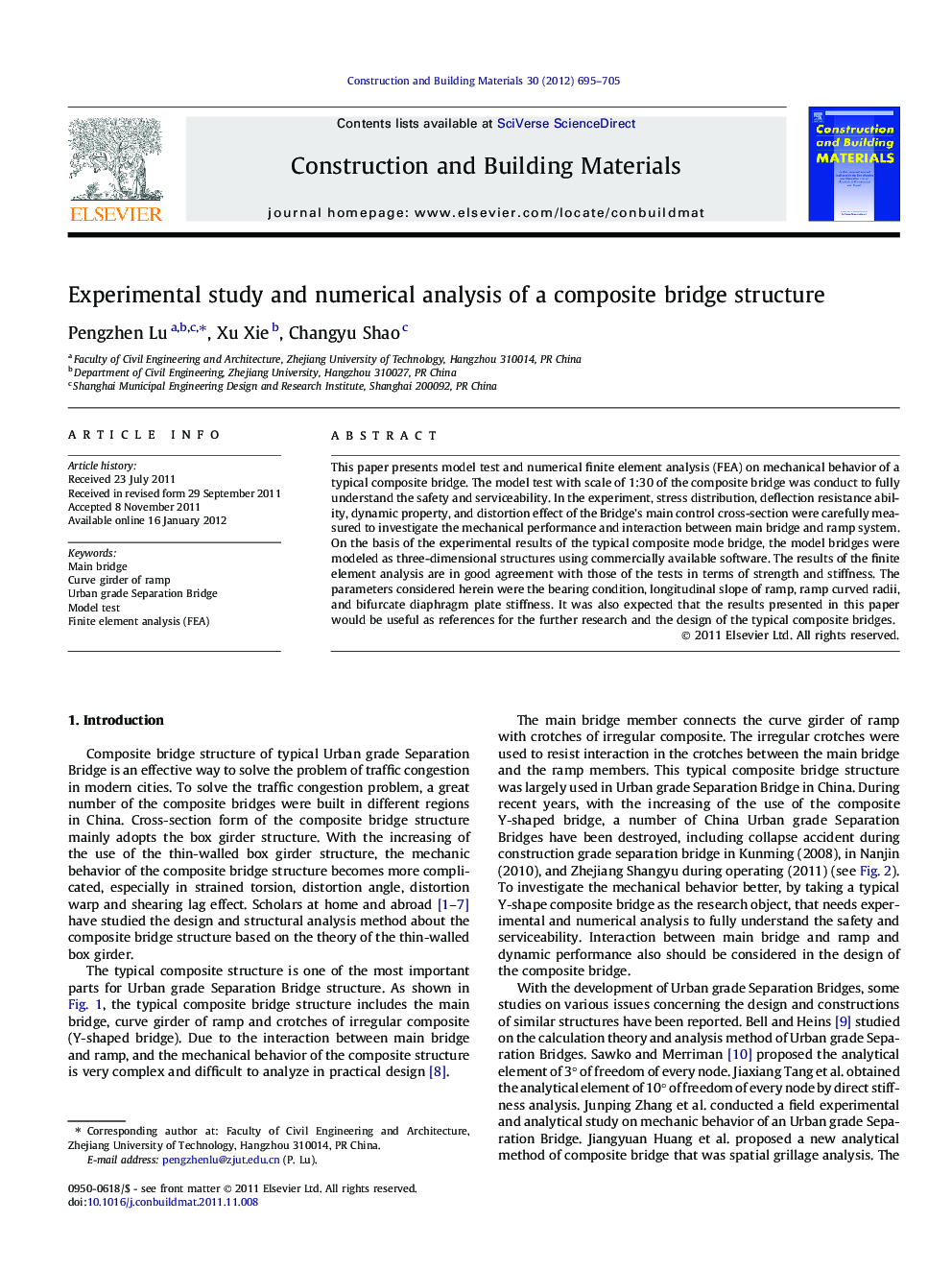| Article ID | Journal | Published Year | Pages | File Type |
|---|---|---|---|---|
| 258572 | Construction and Building Materials | 2012 | 11 Pages |
This paper presents model test and numerical finite element analysis (FEA) on mechanical behavior of a typical composite bridge. The model test with scale of 1:30 of the composite bridge was conduct to fully understand the safety and serviceability. In the experiment, stress distribution, deflection resistance ability, dynamic property, and distortion effect of the Bridge’s main control cross-section were carefully measured to investigate the mechanical performance and interaction between main bridge and ramp system. On the basis of the experimental results of the typical composite mode bridge, the model bridges were modeled as three-dimensional structures using commercially available software. The results of the finite element analysis are in good agreement with those of the tests in terms of strength and stiffness. The parameters considered herein were the bearing condition, longitudinal slope of ramp, ramp curved radii, and bifurcate diaphragm plate stiffness. It was also expected that the results presented in this paper would be useful as references for the further research and the design of the typical composite bridges.
► Y-shape composite bridges must introduce a new dimension in bridge design. ► Analyzing and designing the stringer or ramp cannot be used for composite bridges. ► Entire superstructure of Y-shape composite bridges must be designed as a unit. ► Diaphragm of crotches for composite bridge should have at least one double fixed bearings setup. ► Ramp stringer middle span should have suitable off-center expansion bearing.
